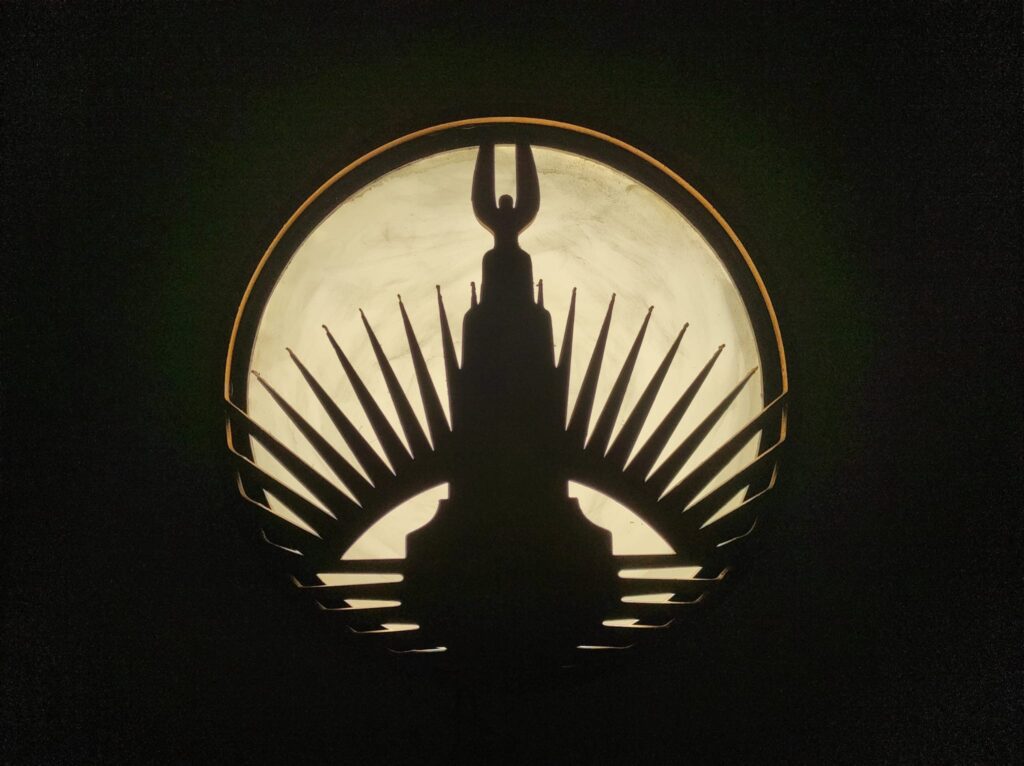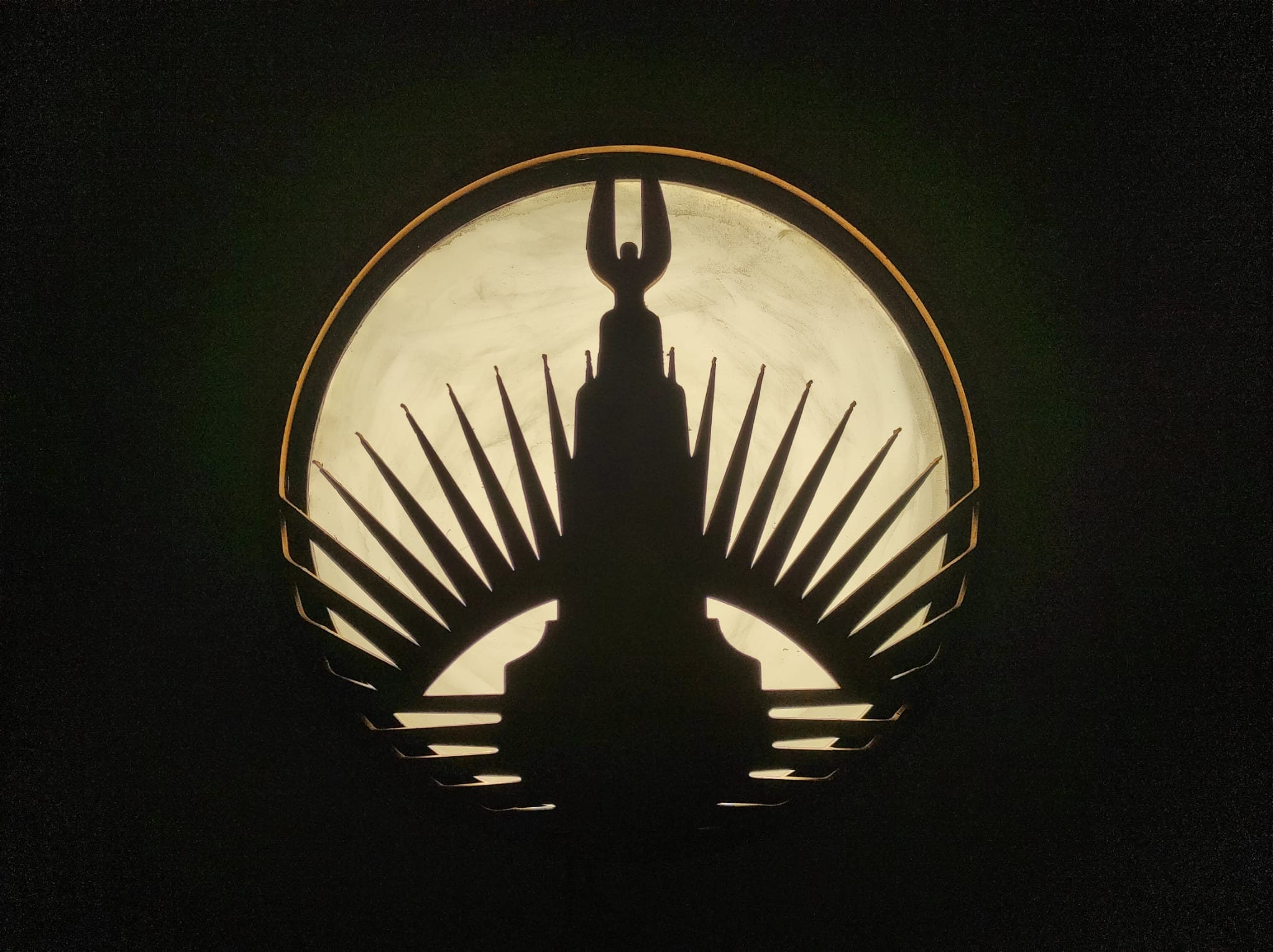
Decoding BioShock Symbols: A Deep Dive into Rapture’s Iconography
The BioShock series, renowned for its immersive storytelling and philosophical depth, is heavily reliant on symbolism. From the art deco architecture of Rapture to the genetic modifications of its inhabitants, every element serves a purpose, contributing to the game’s rich narrative tapestry. Understanding the BioShock symbols is crucial for grasping the underlying themes of objectivism, free will, and the dangers of unchecked ambition that permeate the series. This article will delve into the most prominent BioShock symbols, analyzing their meanings and significance within the game’s world.
The City of Rapture: A Symbol of Failed Utopia
Rapture itself is perhaps the most significant BioShock symbol. Built by Andrew Ryan as a haven for the world’s elite, a place where individuals could pursue their passions without government interference or moral constraints, it quickly descends into chaos. The art deco architecture, initially representing progress and sophistication, becomes a decaying monument to Ryan’s failed ideology. The underwater setting further isolates Rapture, symbolizing its detachment from reality and the consequences of Ryan’s hubris. The very name, Rapture, implies an ecstatic escape, yet the reality is a dystopian nightmare. The city’s decline is a visual representation of the corruption that festered within its foundations.
The Art Deco Aesthetic
The art deco style, prevalent throughout Rapture, isn’t merely an aesthetic choice. It represents the optimism and technological advancement of the mid-20th century, the era in which Rapture was conceived. However, within the context of BioShock, it becomes a symbol of misplaced faith in progress and the dangers of unchecked ambition. The grandiose structures, once symbols of innovation, are now crumbling reminders of a failed dream. This contrast highlights the game’s critique of objectivist philosophy and its potential for abuse.
The Underwater Setting
Rapture’s location beneath the Atlantic Ocean is no accident. It symbolizes isolation, both physical and ideological. Ryan sought to create a society separate from the rest of the world, free from its constraints and perceived moral decay. However, this isolation also breeds paranoia and ultimately contributes to Rapture’s downfall. The underwater environment also creates a sense of claustrophobia and unease, reflecting the psychological state of the city’s inhabitants. The crushing pressure of the ocean mirrors the suffocating atmosphere of Ryan’s authoritarian rule.
The Little Sisters and Big Daddies: Symbols of Exploitation and Protection
The relationship between the Little Sisters and Big Daddies is one of the most disturbing and iconic elements of BioShock. The Little Sisters, young girls genetically modified to harvest ADAM (a substance that grants superhuman abilities), represent innocence corrupted and exploited. The Big Daddies, heavily armored protectors, symbolize both the subjugation of the individual and the potential for redemption. Their existence highlights the ethical dilemmas at the heart of BioShock’s narrative. The BioShock symbols here are potent and thought-provoking.
The Little Sisters
These characters are central BioShock symbols. The Little Sisters, with their vacant stares and unsettling behavior, embody the dehumanizing effects of genetic manipulation and exploitation. They are treated as commodities, their bodies used to produce ADAM for the benefit of others. Their existence challenges the player’s morality, forcing them to confront the ethical implications of their actions. Harvesting ADAM from the Little Sisters provides significant advantages, but at a moral cost. Rescuing them, on the other hand, offers a path to redemption. This choice is a core element of BioShock’s gameplay and narrative.
The Big Daddies
The Big Daddies, hulking figures clad in diving suits, are genetically engineered to protect the Little Sisters. They are programmed to be fiercely loyal and will attack anyone who threatens their charges. While they appear menacing, they are ultimately victims of Ryan’s regime, their free will suppressed in service of his ideology. The Big Daddies represent both the dangers of unchecked power and the potential for compassion even in the most unlikely of beings. Their iconic design, with the diving suit and drill, has become synonymous with the BioShock franchise.
ADAM and Plasmids: Symbols of Genetic Manipulation and Addiction
ADAM, the genetic material harvested from the Little Sisters, is the driving force behind Rapture’s decline. It grants superhuman abilities through the use of Plasmids, but it also leads to addiction and genetic degradation. ADAM represents the seductive power of technology and the dangers of tampering with human nature. The BioShock symbols tied to ADAM are crucial to understanding the game’s themes of morality and consequence.
The Allure of ADAM
The promise of superhuman abilities through ADAM is what initially draws people to Rapture and fuels its growth. However, the addictive nature of ADAM and its long-term consequences lead to widespread genetic mutations and societal decay. The Splicers, once ordinary citizens, become grotesque parodies of humanity, driven mad by their addiction to ADAM. This illustrates the dangers of prioritizing short-term gains over long-term consequences and the seductive nature of power. The BioShock symbols here are a cautionary tale about the misuse of technology.
Plasmids and Their Powers
Plasmids, which grant users abilities like telekinesis, pyrokinesis, and electrokinesis, are a visual representation of the transformative power of ADAM. While these abilities can be used for good, they are often employed for selfish or destructive purposes. The Plasmids highlight the ethical dilemmas associated with genetic modification and the potential for abuse. The choice of which Plasmids to use and how to use them is a key aspect of BioShock’s gameplay, reflecting the player’s moral compass.
Andrew Ryan: The Embodiment of Objectivism and Tyranny
Andrew Ryan, the founder of Rapture, is the embodiment of objectivist philosophy and the dangers of unchecked power. He believes in individual freedom and self-reliance, but his pursuit of these ideals leads to tyranny and oppression. Ryan’s character is a complex and multifaceted one, and his motivations are not always clear. However, his actions ultimately demonstrate the flaws in his ideology and the destructive consequences of his unwavering belief in his own vision. His control over Rapture makes him one of the most powerful BioShock symbols in the game.
The Philosophy of Objectivism
Ryan’s objectivist philosophy, based on the ideas of Ayn Rand, emphasizes individual achievement and self-interest. He believes that individuals should be free to pursue their own goals without government interference or moral constraints. However, his interpretation of objectivism leads to a society where the strong exploit the weak and where dissent is ruthlessly suppressed. This demonstrates the potential for even noble ideals to be twisted and used to justify oppression. The BioShock symbols surrounding Ryan highlight the dangers of ideological extremism.
Ryan’s Control and Oppression
Despite his claims of promoting individual freedom, Ryan maintains absolute control over Rapture. He uses propaganda, surveillance, and violence to suppress dissent and maintain his power. His actions contradict his stated ideals and reveal the hypocrisy at the heart of his regime. Ryan’s control over Rapture is a symbol of the dangers of authoritarianism and the importance of protecting individual rights. The BioShock symbols associated with his regime serve as a warning against the erosion of freedom.
The Chains: A Symbol of Control and Manipulation
The recurring motif of chains throughout the BioShock series represents control, manipulation, and the loss of free will. From the Big Daddies’ physical restraints to the Little Sisters’ mental conditioning, chains symbolize the forces that bind individuals and prevent them from making their own choices. The breaking of these chains, both literally and figuratively, is a central theme of the BioShock narrative. These BioShock symbols are visually striking and emotionally resonant.
Physical and Mental Chains
The physical chains worn by the Big Daddies represent their forced servitude and the suppression of their individuality. The mental conditioning of the Little Sisters, on the other hand, represents a more insidious form of control, where their thoughts and actions are manipulated from within. Both types of chains highlight the dehumanizing effects of Ryan’s regime and the importance of resisting oppression. The imagery of chains is a powerful BioShock symbol representing the struggle for freedom.
Breaking Free
The act of breaking free from these chains, whether through physical liberation or mental awakening, is a recurring theme in BioShock. The player’s choices often determine whether they perpetuate the cycle of control or help to break it. The ability to rescue the Little Sisters, for example, represents a conscious effort to resist Ryan’s ideology and restore their humanity. This theme of liberation is a central message of the BioShock series. The BioShock symbols associated with freedom are ultimately more powerful than those of control.
Conclusion: The Enduring Legacy of BioShock’s Symbolism
The BioShock symbols explored in this article are just a few examples of the rich and complex symbolism that permeates the series. From the architecture of Rapture to the characters and their motivations, every element of BioShock contributes to its enduring legacy as a thought-provoking and morally challenging work of art. By understanding these symbols, players can gain a deeper appreciation for the game’s themes and its relevance to contemporary society. The game’s exploration of objectivism, free will, and the dangers of unchecked ambition remains as relevant today as it was when the game was first released. BioShock’s masterful use of symbolism ensures that it will continue to be analyzed and debated for years to come. [See also: BioShock’s Philosophical Underpinnings] [See also: The Making of BioShock: An Oral History]

